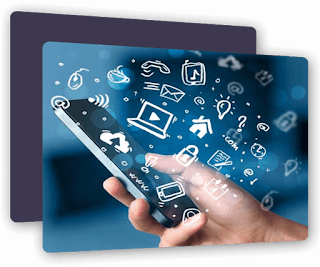4 Basic Types of Learning Methodologies That Can Be Implemented Through E-learning
E-learning is a relatively newer
form of learning that is often compared with the customary learning methods.
Experts question the efficiency of the online learning methods and have been
constantly carrying out comparative studies related to the same.
In this blog, we have picked up the top 4 most efficient ways of learning and have stated down how those customary learning techniques could be implemented through e-learning. Read till the end to find out more insights on it.
1. Workbook
In the traditional learning process, a workbook is a book containing carefully arranged activities that are planned in order to master a subject. The goal of the workbook is to transfer knowledge in a different manner, i.e. through exercises to practice.
How can workbooks be implemented by the e-learning platform providers?
● Create a complete e-learning course based on different exercises such as fill-in blanks and short answer type questions.
● Develop an exercise by
increasing the difficulty level bit by bit.
● Develop highly engaging and
interactive exercises.
● Make sure the exercises are
visually appealing and attractive.
● Enable the learners to print out
hard copies of these exercises.
● Offer self-evaluation tools to
the learners so that they can check the results immediately.
2. Tour
You can conduct a virtual tour of several historical monuments, biosphere sites such as forests, mountains, coaster areas, etc. with the help of Virtual Reality and Augmented Reality technology. Vising these places physically would help kids to develop the concepts around the significant places that they visit. These fun tours also break the monotony from the regular day-to-day schedule and motivate the learners to pursue knowledge.
Tours can also be a very beneficial way of learning for the employees. For instance, the educators may create a virtual tour around some of the top recommended places on the web and deliver some study materials related to that. The educators may in turn ask the learners to make an assignment based on their observations at the tour and share them with their friends and colleagues.
After the learners get accustomed to the tours, the educators might ask them to plan another tour that will serve the educational purpose. This could be one of the most intellectual tasks performed by the learners. Get in touch with the e-learning platform services to install AR&VR technology in your institution today.
3. Repetition
It is already said that every individual must repeat in order to retain their knowledge. Otherwise, 90% of the data tends to disappear from our memory during the first 24hours of the learning process. Therefore, repetition is the only key to success in education. Repetition is easy in the customary learning process wherein learners to go through their lessons again and again. Here are some of the ways how you can implement repetition in your e-learning course as well:
● Divide the module into several parts and give short breaks in between them. Create small quizzes, word puzzles, or crosswords after the end of every small module.
● Repeat the significant area of
your course, throughout the entire module in various different forms such as in
check box, in summarized form, through quizzes of word puzzles.
● Send the crucial segments of the
e-learning module through e-mail or text message regularly after weeks or a
month of completion of the course.
You may also take help from some of the best e-learning platforms to assist you in carrying out the repetition process.
4. Note-taking
While taking notes, learners usually note them down in their personal context using their own language connecting them to their own experiences. Note-taking contributes to building up a stronger memory. It helps to remember the information that is presented to the learners through formal learning methods such as lectures, discussions, and presentations. Note-taking is done through various means for instance, as stand-alone texts, a note on a margin of publication, as marking the significant portions of the course, and so on.
How to facilitate taking notes in your eLearning course? Here are a few thoughts which may help:
● Add choices for taking notes or checking parts of the material.
● Request learners toward the end of your eLearning course to make a note regarding the matter in any structure (text, mind-map, visual note) and email it to their coach, guide, or manager.
● Sum up each module of your eLearning course with a note (or a psyche map) to be printed out by learners.
● Set up a synopsis in a type of a non-finished visual note (or brain map) and request that learners print it out and fill in missing parts.
● Request that learners compose an email with one key directive for every module and email it to their coach, supervisor, or guide.
That being said, you can see that there is not much difference between the customary learning process and the e-learning process. Everything that is done by the educators could be implemented successfully within e-learning and have also proven to serve the best result.

Comments
Post a Comment
Please do not enter any spam link in the comment box.